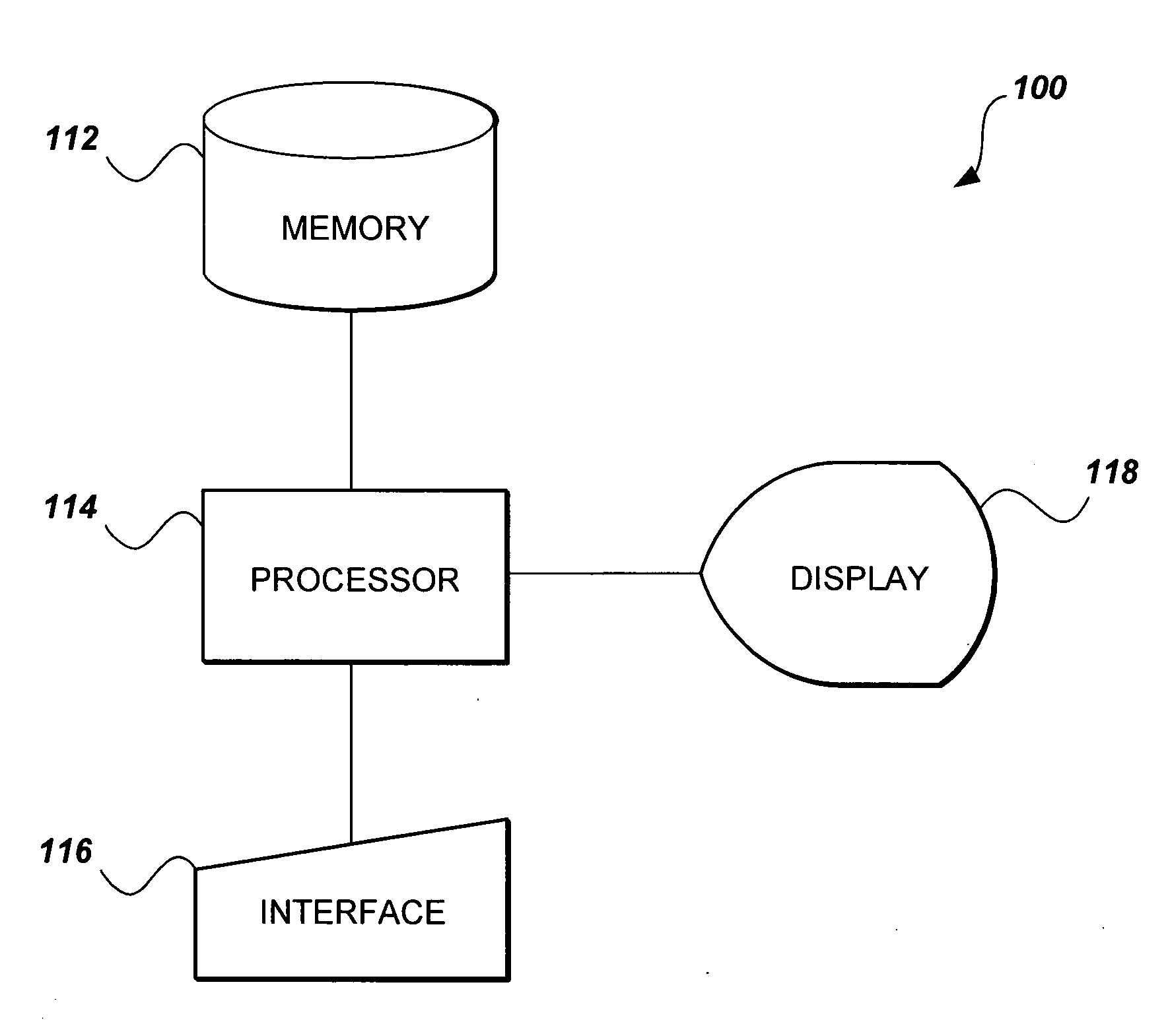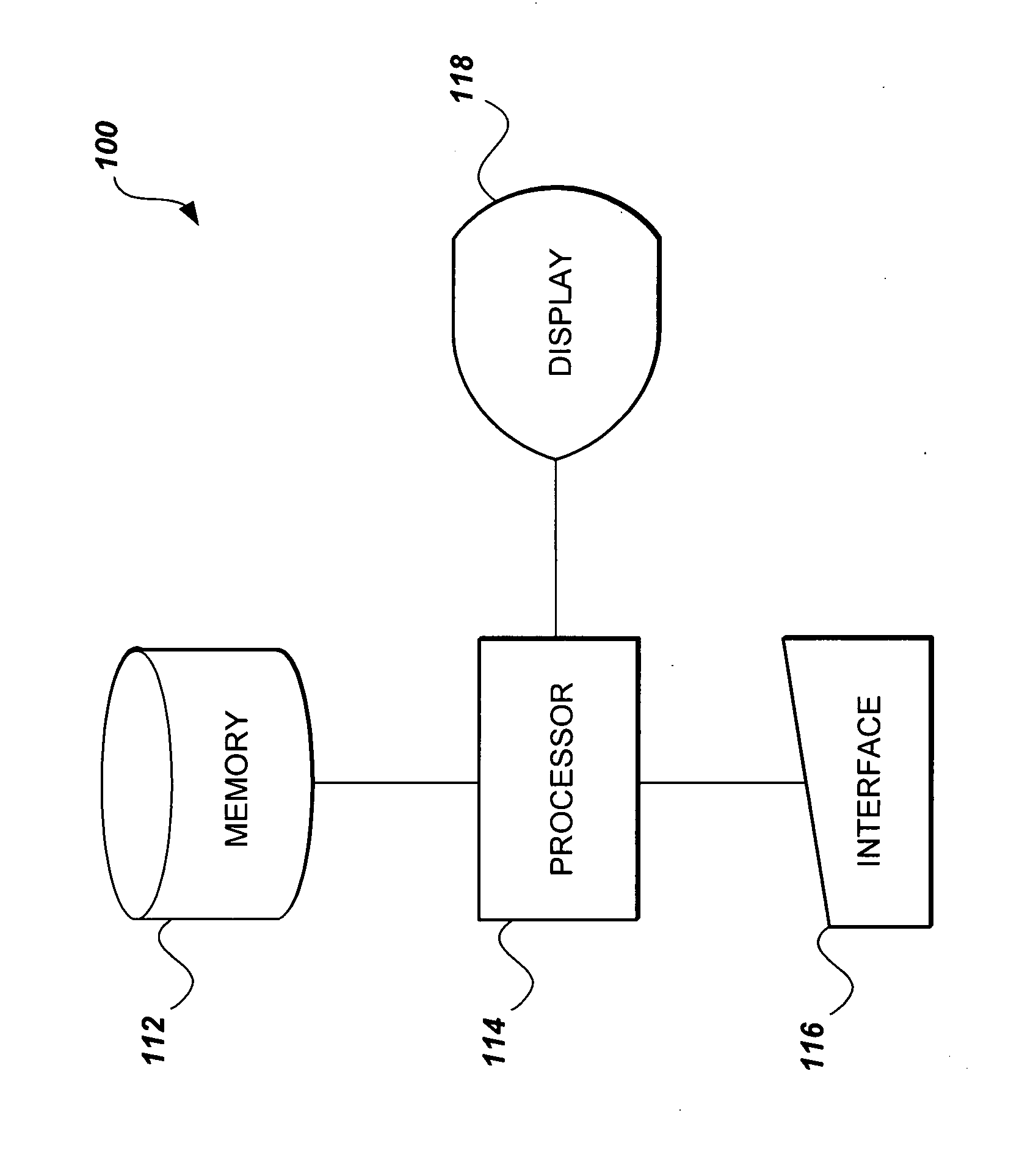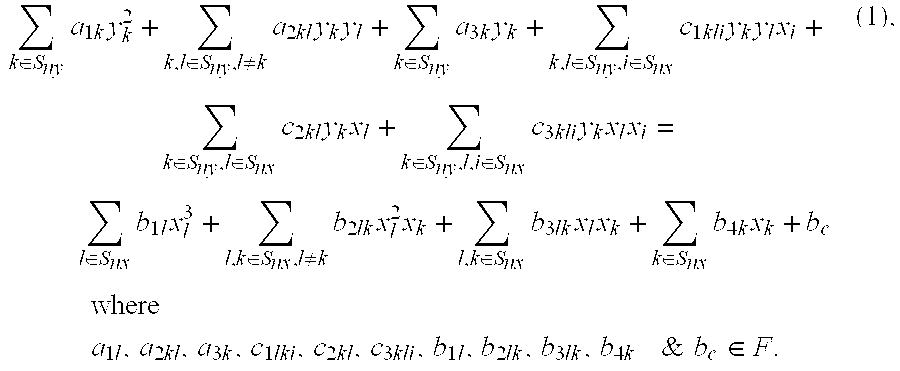Method of performing elliptic polynomial cryptography with elliptic polynomial hopping
a cryptography and polynomial technology, applied in the field of computerized cryptographic methods, can solve problems such as difficulty in deriving one by inference from the other, des has proved vulnerable to attaching through increases in the speed and memory storage of computer hardware, and concerns about the adequacy of the aes algorithm
- Summary
- Abstract
- Description
- Claims
- Application Information
AI Technical Summary
Benefits of technology
Problems solved by technology
Method used
Image
Examples
case b
[0087]iii applies for all other conditions except those in cases B.i and B.ii. This case occurs only when ny is greater than or equal to one. Given two points (x0,o,x1,o, . . . , xnx,o,y0,1,y1,1, . . . , yny,1)∈ECnx+ny+2 and (x0,o,x1,o, . . . , xnx,o,y0,2,y1,2, . . . , yny,2)∈ECnx+ny+2 that do not satisfy the conditions of cases B.i and B.ii above, the sum point is written as (x0,3,x1,3, . . . , xnx,3,y0,3,y1,3, . . . , yny,3)=(x0,o,x1,o, . . . , y0,1,y1,1, . . . , yny,1)+(x0,o,x1,o, . . . , xnx,o,y0,2,y1,2, . . . , yny,2).
[0088]There are several possible rules to find the sum point in this case. Three possible methods are given below.
[0089]1) Using three point doublings and one point addition,
(x0,2,x1,3, . . . , xnx,3,y0,3,y1,3, . . . , yny,3)=4(x0,o,x1,o, . . . , xnx,o,y0,1,y1,1, . . . , yny,1)−2(x0,o,x1,o, . . . , xnx,o,y0,2,y1,2, . . . , yny,2);
[0090]2) using one point doublings and three point additions,
(x0,3,x1,3, . . . , xnx,3,y0,3,y1,3, . . . , yny,3)=(2(x0,o,x1,o, . . . , x...
PUM
 Login to View More
Login to View More Abstract
Description
Claims
Application Information
 Login to View More
Login to View More - R&D
- Intellectual Property
- Life Sciences
- Materials
- Tech Scout
- Unparalleled Data Quality
- Higher Quality Content
- 60% Fewer Hallucinations
Browse by: Latest US Patents, China's latest patents, Technical Efficacy Thesaurus, Application Domain, Technology Topic, Popular Technical Reports.
© 2025 PatSnap. All rights reserved.Legal|Privacy policy|Modern Slavery Act Transparency Statement|Sitemap|About US| Contact US: help@patsnap.com



